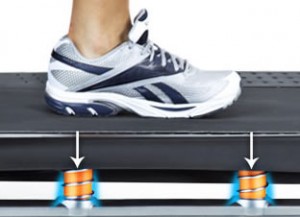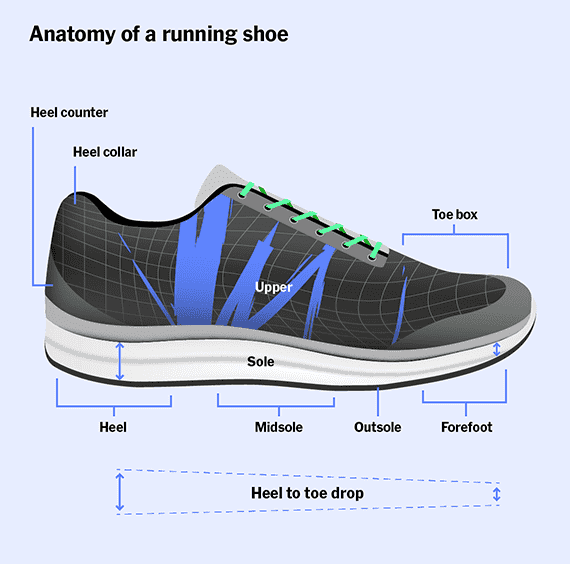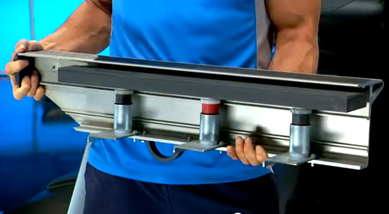If there's one place that treadmills are really misunderstood, it is the effects of impact and the cushioning systems.
This topic is incredibly vast and complex, delving into the benefits of impact and weight-bearing exercises, the nuances between running and walking, and the array of gimmicks and false cushioning systems prevalent in the treadmill industry. The evaluation of treadmill cushioning is often lacking, with few truly understanding its intricacies without bias or ulterior motives. It's a realm where genuine expertise is scarce, overshadowed by misleading reviews and deceptive marketing tactics.
Treadmills, when they first came out were not cushioned. The deck was hard-mounted onto the steel frame. But very quickly, people understood that if they added some cushioning to that hard mounting, they could actually take away some of the impact.
And this is, in general, one of the biggest advantages of running on a treadmill versus running outside. The ability to control the amount of impact, and also lessen the effects of impact. And to a degree, to control the uncertainty of the outdoors.


But most people don't understand cushioning vs stability, and most people making treadmills don't want to spend the money to actually have a good cushioning system Frankly, most manufacturers would rather sell you the treadmill than anything else, so many cushioning systems are actually gimmicks built to feel bouncy. But they don't perform the task properly.
In other words, the cushion in most brands, especially lower end brands, takes advantage of the fact that we perceive 'deck movement' as cushioning, not understanding that where thedeck is cushioning is critical.
In other words, the cushion in most brands, especially lower end brands, takes advantage of the fact that we perceive 'deck movement' as cushioning, not understanding that where thedeck is cushioning is critical.
To really understand cushioning on a treadmill, there's a very, very simple adjacent area that is been studied for decades and where millions of dollars have been spent in research.
If you want to understand treadmill cushioning, just look at the research done on running shoes and walking shoes.
You'll notice that nearly every running shoe or walking shoe is built to control impact at the strike zone, normally at the heel. That's where all the impact is, so that is where the need for cushion is. The arch and midsole is built with support and stability in mind. So it is firmer there and they take away a lot of that cushioning and add support. And the front of running and walking shoes all 'lip up' in the front and they remove all or nearly all of the cushion from the very front end, because you don't want any cushioning at all on push-off. You want as stable a surface as you can get, as any cushion or 'give' on the push-off can exacerbate problems, and it can actually take away some of the energy you are producing. Cushioning on the push-off actually exacerbates stability injuries and causes extra flexion in the plantar tendon and that can actually increase the odds of developing plantar fasciitis.
99% of running of walking shoes are built with these principles in mind, and the change in cushion from heel to toe is also called the 'drop' of the shoe.


So treadmill cushioning, for walkers or for runners, should work on the same principles. Though there are slight differences we might get into it at later date.
Simply put, most of the give, or cushioning on the treadmill should be in the front third of the treadmill deck, which is the 'strike zone' for any walker or runner. That is the only place you will ever have any impact, and the only place you have to deal with stress of impact on the treadmill deck. So that is where most of the cushioning should be.
The middle of the treadmill deck is analogous to the arch or midsole of a running shoe or walking shoe. It should be more stable here and the cushioning should be being reduced here. This is also called the 'transition zone' of a treadmill deck. There won't ever be any impact here, and too much 'give' in this center part of the deck actually works as instability, causing the ACL and MCL, ankle, and hips to compensate for a less stable surface. This is one of those places where you can quickly see a treadmill that's been built to be a more of a good marketing system than a good cushioning system! Lots of 'gimmick' decks do most of their cushioning actually in the middle, and this is uniformly bad. But because most people perceive this extra deck movement as 'cushioning', it is a common thing in bad machines.
The back of the treadmill deck corresponds with the front of the running shoe, and should have the least amount of 'give', next to none. This corresponds to that lipping-up design we talked about with running and walking shoes. If you're getting cushioning here, you're actually losing energy, and causing extra stress on the plantar tendon.
How the cushioning is done in most treadmills is based on elastomers or grommeting under the deck where it attaches to the frame of the treadmill. So this affects both the cushioning and stability of the deck. It's one of the reasons that real 'floating' decks are less stable, and very few brands actually spend the money to create a system that both gives properly and provides a deck that stays level and stable no matter where you hit it.


Oh, as an aside... You're noticing by now that this also means that the proper cushioning in a treadmill means different types and amounts cushioning in the strike zone, the center post, and the push-off. A 'variable' cushioning system. Because that's how 99% of running shoes work. However, no treadmill likes to admit that they have a design that provides worse cushioning. As a matter of fact, I'm yet to see any treadmill brand to admit to anything except for the best cushioning in the industry.
But slatted treadmills are not built to have good cushioning. They're very expensive and so people think that they must have a good cushioning system. But a slatted treadmill design is actually built to produce no friction, and that's its big advantage. It's very smooth, and you have no belt moving over a deck, so the treadmill pulls less power and has tremendous durability.
But slatted treadmills are not built to have good cushioning. They're very expensive and so people think that they must have a good cushioning system. But a slatted treadmill design is actually built to produce no friction, and that's its big advantage. It's very smooth, and you have no belt moving over a deck, so the treadmill pulls less power and has tremendous durability.
But that durability comes at the cost of no deck to allow for variable cushioning. So all the cushioning on a slanted treadmill is built into each slat, and gives you the same cushioning throughout the running surface. It is pretty much the equivalent of taking your run in boat shoes. And this is also why 'training/lifting' shoes are much more flat than running/walking shoes, stability is more important than impact-control.
So if you're using a slatted treadmill, make sure your running shoes are the absolute best they could possibly be, and I don't recommend it at all if you've got any injuries or conditions that impact would affect.
Another minor point is that some brands use all vertical elastomers in their cushioning, and some use horizontal circular elastomers. Most better brands find the vertical versions create a more stable cushion, where the deck gives uniformly, compared to the horizontal versions that 'rock' the deck side to side more when they cushion.
Obviously, everyone has a different feel, their own injuries and issues. But it only makes sense to look at running shoe research to understand treadmill cushioning. And if you have any other questions, let me know.
Another minor point is that some brands use all vertical elastomers in their cushioning, and some use horizontal circular elastomers. Most better brands find the vertical versions create a more stable cushion, where the deck gives uniformly, compared to the horizontal versions that 'rock' the deck side to side more when they cushion.
Obviously, everyone has a different feel, their own injuries and issues. But it only makes sense to look at running shoe research to understand treadmill cushioning. And if you have any other questions, let me know.




COMMENTS